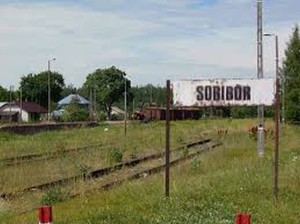The dramatic impact the ever-growing size of visiting groups has European leaders wondering what long-term impact another organized, mechanized mass-murder of Jews might contribute to the Continental economy fifty years from now.
 Oświęcim, Poland, March 5 – Each spring as tens of thousands of Jews from around the world visit the site of the most notorious death camp in the Nazi system, Polish, German, and other European governments note the resulting revenue accruing to the tourism industry, and revisit the question of arranging another Holocaust that will pay off in similar terms several decades hence.
Oświęcim, Poland, March 5 – Each spring as tens of thousands of Jews from around the world visit the site of the most notorious death camp in the Nazi system, Polish, German, and other European governments note the resulting revenue accruing to the tourism industry, and revisit the question of arranging another Holocaust that will pay off in similar terms several decades hence.
Preparations for this year’s March of the Living ceremony, a procession from one segment of Auschwitz-Birkenau to another, have intensified in advance of the throngs of visitors, primarily Jews from North America and Israel, expected to participate in the march and related programs after Passover. Different groups visit different sites throughout Poland in the lead-up to the march, which occurs every year on Holocaust Remembrance Day – Yom HaShoah – the anniversary on the Hebrew calendar of the Warsaw Ghetto Uprising of 1943. Hotels, charter bus companies, and some branches of the retail sales industry look forward to the influx each spring, and the dramatic impact the ever-growing size of visiting groups has European leaders wondering what long-term impact another organized, mechanized mass-murder of Jews might contribute to the Continental economy fifty years from now.
Hungarian President János Áder has formed a committee of like-minded European statesmen and local officials to examine the potential tourism benefits of having thousands of Jews flock to former killing centers to commemorate the victims, in places outside southern Poland.
“Unfortunately for the European tourism economy of the twenty-first century, the Nazis and their allies expended most of their genocidal energy in and around Poland – understandable, to some extent, since Poland was the most heavily-Jewish population of any country under the control of the Third Reich,” he explained. “But the implications for tourism revenue in the twenty-first century and beyond include the fact that many places that also provided enthusiastic support for the oppression of Jews elsewhere on the Continent have little to no share in the present economic benefits. What we intend to determine is the feasibility of conducting a second Holocaust of Jews in Europe, but this time in a much more equally-distributed fashion, such that many more European economies stand to gain from the commemorations, ‘Never Again’ initiatives, and retail hospitality demand that will eventually occur.”
Members of the committee have already had to grapple with the harsh reality that many fewer Jews remain in Europe, making a second European Holocaust on the scale of the first one a numeric impossibility. “But we’re not discouraged,” promised Áder. “As we speak, many European governments have already been working to lend a hand in making another Holocaust of Jews happen in Israel – as the saying sort of goes, if Mohammed won’t come to the massacre, the massacre will come to Mohammed.”
Please support our work through Patreon.




